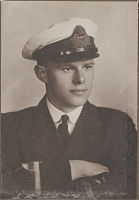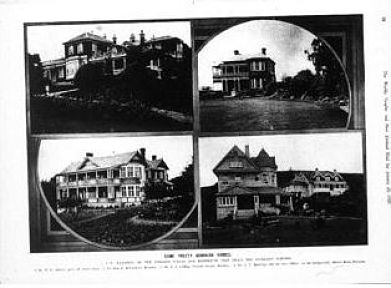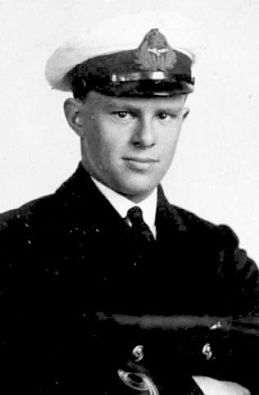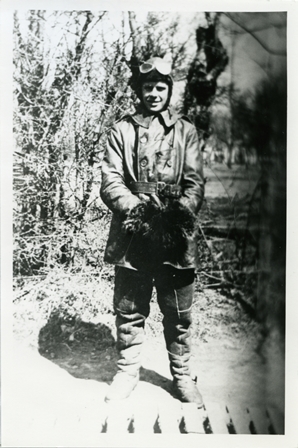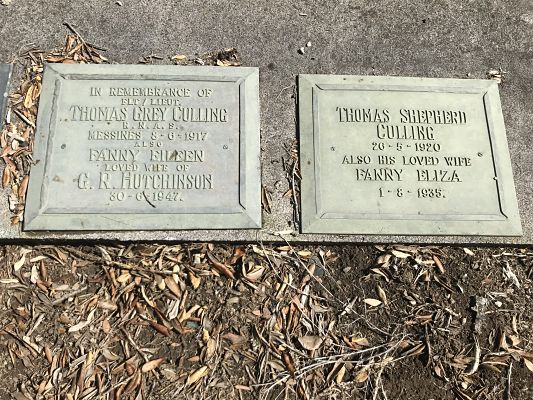WW1 Flight Lieutenant Thomas Grey Culling DSC — New Zealand’s First Air Ace
Thomas Culling holds two distinguished titles in New Zealand aviation history. He was not only the youngest of the air aces in World War One or Two, but he was also the Dominion’s first air ace[1 ].
Thomas Grey Culling was born at Dunedin on 31 May 1896, the only son of Thomas Shepherd Culling (1854-1920)and Fanny Eliza Grey (1866-1935), of 23 Victoria Avenue, Remuera. His early education took place in Dunedin, where his grandfather had made his fortune during the Otago gold rush era and his father Thomas Shepherd Culling was a local body politician and successful businessman. Thomas Shepherd Culling became known as the father of printing in Dunedin. He had been Mayor of St Kilda, owner of the Mataura Falls Paper Mills in Southland, a partner of Coulls and Culling printers (later Coulls Somerville Wilkie Ltd) and R Wilson and Company (later Wilson Neil Ltd). [2]
During 1906, due to poor health, he moved his family to Auckland, where Thomas attended King’s College from 1909 to 1913. In 1914 when war was declared Thomas had just finished his schooling and was working as a salesman for A J Entrican and Company, general merchants in Auckland city. He was also a member of College Rifles Club and just four days after the declaration of war, left with a contingent from the club for Wellington. Here he immediately volunteered for military service with the Advance Force, which was about to leave to remove the German military from Samoa.
Culling’s father was unhappy about his son going off to war at such a tender age, as an excerpt from a letter to his sister reveals: “Our Tom was among the first to be called off to duty; he is now in Wellington in camp. I have protested against him leaving New Zealand, being only 18 years, whereas the government promised that they would take none under 20 years. I am trying to get him back to Auckland. If he got away, the probability is we would never see him again, and if he did come back, he might be quite ruined for work like many of the members of contingents who returned from the Boer War“. Culling senior was successful in preventing his son embarking for Samoa, but in August 1915, he left New Zealand, bound for Britain and intending to join the Royal Naval Air Service (RNAS).
He arrived in England and was accepted as an enlistee into the RNAS on 29 January 1916. He began his flight training on Maurice Farman biplanes at Chingford Air Station in Essex, obtaining his aviator’s certificate in mid-July and graduating with his pilot’s brevet at the beginning of September. He then proceeded to Eastchurch in Kent, undertaking a fortnight’s course at the gunnery school. On 18 September with under 50 hours of air time, he was ordered to Dover to await an operational posting. In the interim, he carried out nine sea patrols from the station and, on the last day of the month, was released for foreign service. Culling was a model officer who ticked all the right boxes, his personal file recording he was “perfect in every way and a good type of officer “. This resulted in him joining a unit known as the “Detached Squadron” which was part of No. 1 Wing RNAS at Furnes in Belgium, close by the border with France.
Culling was subsequently attached to Australian Flight Commander Roderic Dallas’ flight. Dallas was a striking personality who compiled a tally in excess of 30 victories, elevating him to become his country’s most successful pilot of the war. Dallas and Culling flew frequently together and often were able to verify the other’s involvement and success in dogfights. The assessment given Culling at Dover proved correct, and he became a committed and forceful aviator, with an unquestionable appetite for engaging the opposition whenever the occasion presented itself. [3]
In 1916 the German Albatros planes had dominated the skies with the loss of 3 British planes for every German one. [4] In December the squadron began updating with the new British Sopwith Triplane, being the first unit to receive it. The pilots nicknamed it the Tripehound or Tripe. It was powered by a 130hp Clerget rotary engine and had a Vickers machine gun, synchronised to fire through the propeller. Its unique wing development gave the plane a phenomenal rate of climb, exemplary manoeuvrability and a top speed of 120 mph at 10,000 feet. [5] The Sopwith Triplane was a wonderful development and had an advantage over all of the enemy fighters then at the front.
Culling was assigned to fly Sopwith Triplane No. N5444 with 1 Naval Squadron, Bailleul in France, attached to the 11th Army Wing, 2 Brigade, Royal Flying Corps. [6] He began to score victories in Bloody April 1917, with his first three coming that month. The third one was significant; it was part of one of the war’s epic dogfights. The combat of 23 April became known as one of the classic air battles of the war. Dallas and his wingman Thomas Culling took on a squadron-sized formation of 14 German aircraft, having gained an altitude edge over their foes. The naval aces exploited this edge by making quick diving attacks from opposite sides, culminating in short bursts of machine-gun fire. Using the Triplane’s superior climbing ability, they would then bob back up to position themselves for the next assault. In contrast to the usual hit-and-run tactics of most dogfights, the RNAS duo launched at least 20 gunnery runs over 45 minutes. The Germans were forced progressively lower, into disarray, and then chased back over their own lines. While they shot down three of the Germans, Dallas and Culling also achieved a more important outcome by blocking and then breaking up a determined enemy effort against the British ground offensive.
The action led to the award of a Bar to the Distinguished Service Cross for Dallas, and a Distinguished Service Cross for Culling, which were gazetted on 29 June 1917. [7] The citation for his Distinguished Service Cross (DSC) reads: “In recognition of his services on 23rd April 1917, when with two other machines he engaged a formation of nine hostile scouts and two-seater machines. Two two-seater machines were shot down, one of them by Flt Lieut. Culling unassisted.” (London Gazette, issue no. 30147 published on 22 June 1917, p. 6256)
His victories included:[8]
| Victories | |||||||||||||||||||||||||||||||||||||||||||||||||
|
During May, Culling received promotion to Flight Lieutenant. Less than 3 weeks later Culling went missing flying Triplane N5491. Having successfully negotiated the most dangerous part of the year, he fell in an airfight against an opposite from the German Maritime Air Service during an offensive patrol on the morning of 8 June 1917. North of Warneton, just inside the Belgium border, just before midday Viceflugmeister (Non-Commissioned Airman) Bossler of Marine Feldjagdstaffel Nr 1(Marine Field Fighting Squadron No. 1) shot down a triplane believed to be the New Zealander’s. Culling’s body was not recovered and consequently his name is inscribed on the Arras Flying Services Memorial which commemorates nearly 1,000 airmen with no known grave. [9] He had completed 141 flying hours in 68+ operations. [10]
Mrs Fanny Culling in memory of her son gifted two new stained-glass windows for the King’s College Memorial Chapel. They formed part of the general series of windows in the chapel, all designed by the same artist, Mr. A. L. Ward, of London, to illustrate aspects of the life and teaching of Christ. The memorial windows were unveiled by Mr. J. C. Whitney, Thomas Grey Culling’s brother-in-law, and were dedicated by Archbishop Averill at the Anzac Day memorial service on 25th April 1927. [11]
Tom Culling was a typical young New Zealander of his time. He possessed youthful exuberance, a patriotic fervour and a desire for adventure but sadly, his life was cut too short before he could receive the honour he deserved. Thomas Grey Culling was survived by his mother and three sisters Mona Irene Spedding, Gladys Torrance Whitney and Fanny Eileen Culling. Tom Culling is commemorated on the:
- Arras Flying Services Memorial, Pas de Calais, France.
- Purewa Cemetery family memorial Block A Row 27 Plot 5 (Mrs Fanny Culling)
- Remuera Primary School memorial gates,
- King’s College Roll of Honour and King’s College Memorial Chapel
- St Aidan’s Church memorial cross,
- College Rifles’ Roll of Honour and the
- Warbirds of Wanaka Fighter Ace Wall which commemorates pilots who have scored at least five victories in air-to-air combat.
You can find more about the history of College Rifles here.
